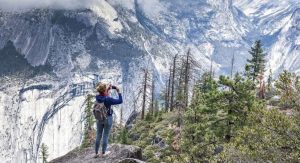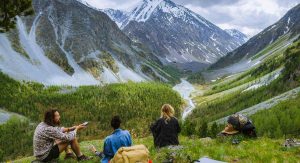Why Is Saba Worth Visiting? Here’s Why This Tiny Caribbean Island Is a Giant Hidden Gem
Ever felt like you’ve seen all the Caribbean has to offer—white sand beaches, big resorts, busy cruise ports—and wondered if there’s still a place that feels untouched, raw, and real?
That’s where Saba Island comes in.
Sure! Here’s your original description with the title “Reasons Why It Is Worth Visiting Saba Island” naturally added at the beginning, without altering the original wording:
Reasons Why It Is Worth Visiting Saba Island: It’s not just another Caribbean destination. It’s the Caribbean’s best-kept secret. A 5-square-mile volcanic island with no crowded beaches, no commercial sprawl, and no mass tourism—just jaw-dropping natural beauty, a welcoming local culture, and a refreshing escape from the usual.
In this article, you’ll discover why it’s 100% worth visiting Saba Island, whether you’re an adventure-seeker, nature lover, or someone just needing to unplug. We’ll cover everything—from what makes Saba different, to what you can do, how to get there, what to expect, and even what surprises might catch you off guard.
By the end, you’ll not only know if Saba is the right destination for you—you’ll likely be adding it to your bucket list.
What Is Saba Island, and Why Haven’t You Heard More About It?
Saba is a Dutch Caribbean island located in the northeastern Caribbean Sea, just south of St. Maarten. It’s part of the Kingdom of the Netherlands and home to about 2,000 residents—a close-knit, peaceful community known for its warm hospitality and sustainable way of life.
Here’s what makes it stand out:
- No mass tourism: No chain hotels, no casinos, no beaches lined with vendors.
- Volcanic terrain: Home to Mount Scenery, the highest point in the Netherlands.
- Unspoiled nature: Lush rainforest, rugged coastline, and pristine coral reefs.
- The “Unspoiled Queen”: That’s not a marketing term—it’s how locals (and repeat visitors) proudly refer to Saba.
Saba’s relative obscurity is actually part of its charm. There are no direct international flights or sprawling resorts—and that’s exactly what makes it so special.
Top Reasons Why Saba Island Is Worth Visiting
Let’s break down all the compelling reasons why a trip to Saba is unlike anything else in the Caribbean.
1. Epic Hiking on Mount Scenery and Beyond

If you love hiking, Saba is paradise. It’s home to the Mount Scenery Trail, a lush, steep path that takes you to the summit of the dormant volcano at 2,910 feet (887 meters). On a clear day, you can see neighboring islands—and even as far as St. Kitts or Montserrat.
But that’s just one of 15+ trails crisscrossing the island. Others include:
- The Crispeen Trail: Scenic ridge walks and jungle flora.
- Sandy Cruz Trail: Panoramic views and forested stretches.
- Maskehorne Hill: A lesser-known trail for quiet solitude.
Why it’s unique: You’re trekking through cloud forests, tropical rainforest, and volcanic rock—often all in a single hike.
Bonus: No snakes. Seriously. There are no dangerous animals on the island.
2. World-Class Scuba Diving and Snorkeling Without the Crowds
Saba’s waters are a dream for divers and marine life enthusiasts.
The island is surrounded by the Saba National Marine Park, a protected zone stretching around the entire coastline. What this means for you:
- Crystal-clear visibility
- No overfished reefs
- Strict conservation standards
- Rare marine species sightings
Top dive sites include:
- The Pinnacles: Underwater volcanic formations teeming with life
- Tent Reef: Night dives with bioluminescent organisms
- Ladder Labyrinth: A favorite for underwater photographers
Even if you’re not a certified diver, snorkeling off Saba’s coast is rich and rewarding, especially in spots like Wells Bay or Torrens Point.
3. Authentic Caribbean Culture and Community
Saba doesn’t cater to crowds—it embraces connection. The island has just four small villages: The Bottom, Windwardside, St. Johns, and Hell’s Gate.
Here’s what you’ll find:
- Locally-owned guesthouses and inns
- Friendly, tight-knit locals who remember your name
- Island-wide pride in sustainability and culture
- No fast food, no malls—just real, local living
Don’t miss chatting with Sabans at a local bar or joining in during one of the island’s village events or heritage festivals. You’ll feel more like a guest than a tourist.
4. Peace, Privacy, and Unplugged Living
Let’s be honest—many Caribbean islands are noisy, commercialized, and hectic. But Saba offers something rare:
- No cruise ships
- No tourist traps
- No beach touts or crowds
- No loud nightlife
If you’re looking for quiet luxury, digital detox, or mental clarity, Saba is your spot. It’s one of the few places where you can actually hear yourself think.
5. Incredible Eco-Tourism and Sustainability Initiatives

Saba isn’t just “green” in appearance—it’s green in practice.
From solar energy efforts to marine protection to banning single-use plastics, this island takes environmental sustainability seriously.
Some examples:
- Marine Park fees fund reef protection directly
- Hotels encourage low-impact travel
- Hikers are guided to stay on trails and respect the ecosystem
Travelers who value eco-friendly adventures will find Saba aligns with their values.
6. Quaint and Charming Accommodations
Forget luxury chains—Saba is all about charming, boutique inns, eco-lodges, and intimate villas.
Most accommodations are locally owned, offering:
- Breathtaking views
- Personalized service
- Unique architecture (think red-roof cottages with white walls)
- Proximity to trails, dives, and dining
Popular places include Juliana’s Hotel, Scout’s Place, and El Momo Cottages—each offering a distinct Saban feel.
7. Delicious Local Cuisine and Fresh Flavors

Though it’s a small island, Saba delivers when it comes to food. Expect a mix of Caribbean, European, and American influences with a focus on:
- Fresh seafood (mahi-mahi, tuna, lobster)
- Tropical fruits and spices
- Local favorites like stewed goat or Saban lobster soup
Try these spots:
- The Brigadoon: Fine dining in a colonial home
- Chez Bubba Bistro: Upscale yet relaxed
- Swinging Doors: A casual BBQ joint run by a local legend
Even grocery stores and bakeries have a unique local flair you won’t find elsewhere.
8. Safe, Walkable, and Easy to Explore
Saba may be mountainous, but it’s small and easily navigable. You can explore most of the island by:
- Foot (especially in Windwardside)
- Taxi (drivers are also part tour guide)
- Scooter or rental car (though roads are steep!)
Fun fact: Saba’s main road, called “The Road That Couldn’t Be Built,” is an engineering marvel with switchbacks and stunning vistas.
Bonus: Saba has one of the lowest crime rates in the Caribbean.
9. Unique Experiences You Won’t Find Elsewhere
There’s so much that makes Saba one-of-a-kind:
- Juancho E. Yrausquin Airport: The world’s shortest commercial runway. The landing is thrilling (and safe).
- Handmade Saba Lace: A centuries-old tradition, still practiced today
- The Ladder: A stone staircase that once connected ships to The Bottom—436 steps carved into a cliff
- Cloud Forest Hiking: A rare environment in the Caribbean
Common Misconceptions About Saba
Let’s clear up a few things people often get wrong:
- “There’s nothing to do there.”
Not true—there’s no nightlife, but there’s plenty to do if you love nature, wellness, and connection. - “It’s hard to get to.”
You can fly from St. Maarten in under 15 minutes or take a ferry. It’s remote, but not inaccessible. - “No beaches = no fun.”
True, Saba doesn’t have sandy beaches, but its coastal cliffs, sea pools, and diving opportunities more than make up for it.
What Type of Traveler Will Love Saba?
Saba isn’t for everyone—and that’s part of its charm. You’ll especially love it if:
- You’re a hiker, diver, or nature lover
- You want a non-touristy, off-the-grid experience
- You value eco-conscious travel
- You need a place to reset and recharge
- You enjoy learning about local cultures
Tips for Visiting Saba Island
- Stay at least 3–5 days to experience hiking, diving, and local culture.
- Bring good walking shoes—the terrain is hilly.
- Book activities in advance during peak season (November to April).
- Check ferry and flight schedules as transportation can be weather-dependent.
- Pack a light jacket or sweater—the mountain air can get cool at night.
Mistakes to Avoid When Visiting Saba
- Assuming it’s like other Caribbean islands—you’ll be disappointed if you expect beaches, bars, or busy resorts.
- Not reserving accommodations early—there are limited rooms.
- Overlooking travel insurance—weather can affect transportation.
- Skipping guided tours—local guides share stories, history, and insights that you’ll miss alone.
Real-Life Testimonials
“I’ve traveled all over the Caribbean, but Saba gave me a sense of peace I’ve never found elsewhere.”
— Linda R., solo traveler
“As a diver, Saba was heaven. We had entire reefs to ourselves.”
— Marco D., scuba enthusiast
“It felt like we were guests in someone’s home, not just tourists. That made all the difference.”
— Sasha and Chris M., honeymooners
Frequently Asked Questions (FAQs) About Visiting Saba Island
Q: How do you get to Saba Island?
A: Most travelers fly into St. Maarten (SXM) and take a short 15-minute flight or 90-minute ferry to Saba. Flights are operated by Winair, and ferries like The Edge or Makana run several times a week.
Q: Is Saba safe to visit?
A: Yes—Saba is one of the safest Caribbean islands, with very low crime and a tight-knit, respectful community.
Q: When is the best time to visit Saba?
A: The dry season from December to May is ideal for hiking and diving. The rainy season (June to November) is lush and green but may bring storms.
Q: Does Saba have beaches?
A: Not traditional sandy beaches, but Wells Bay occasionally has black volcanic sand, and the coastline offers dramatic cliffs, sea pools, and reef access.
Q: Do you need a visa to visit Saba?
A: U.S., Canadian, and EU citizens do not need a visa for stays under 90 days.
Q: Can you dive on Saba without certification?
A: Yes, there are introductory dives available with local dive shops like Sea Saba or Saba Divers.
Q: What’s the local currency on Saba?
A: The U.S. dollar is the official currency, even though Saba is a Dutch municipality.
Final Thoughts: Is Saba Island Worth Visiting?
Absolutely—if you’re looking for something real.
Saba isn’t about luxury in the traditional sense. It’s about quiet mornings above the clouds, hikes that take your breath away, coral reefs untouched by crowds, and locals who truly care about their home.
So if you’re craving a Caribbean experience that’s unlike anything else, with nature, connection, and peace at the core—Saba Island is more than worth visiting. It may just be the best travel decision you make this year.
Next Step:
Start by checking flights to St. Maarten, then look up ferries or flights to Saba. Book a stay in Windwardside, plan a hike or dive, and let this island surprise you.
You won’t just visit Saba—you’ll remember it forever.
